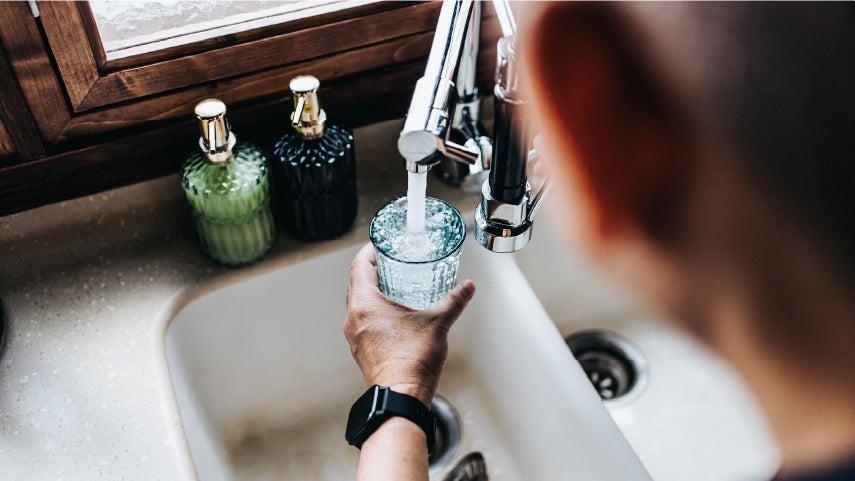
Related Topics
A warm, toasty home in the winter is a comfort many people take for granted. But if you’re living on a fixed income, you might be forced to make difficult choices—such as paying your heating bill or affording groceries that week. More and more, according to the National Energy Assistance Directors Association (NEADA), this energy poverty is a worsening crisis that affects millions of Americans.
In no small part, that's because electricity prices are rising nearly twice as fast as overall inflation: 5.7% versus 2.8% by the end of June 2025.1
Living in a house or apartment that’s dangerously cold or warm puts your health and well-being at risk. If you’re struggling with utility bills, help is available. The Low-Income Home Energy Assistance Program (LIHEAP) was created to make home energy costs more affordable for people in need. By providing short-term financial support, this program helps an estimated 6.7 million households stay safe and healthy during peak winter and summer months.2 LIHEAP benefits can be used for home energy bills, energy-related home improvements and repairs, and emergency energy assistance.
Many of us mistakenly assume we don’t meet LIHEAP income guidelines and can’t get energy assistance. However, you may be surprised to learn how many people are eligible for help. LIHEAP income limits vary from state to state and can change each year. It’s worth taking the time to find out if you qualify to apply for LIHEAP. The benefits you receive could help you worry less about bills and make your home more comfortable.
How do I know if I qualify for LIHEAP?
LIHEAP is designed for people with low income who are having trouble paying their home energy bills. To qualify, you must show a financial need and meet the most recent LIHEAP income guidelines for 2025. LIHEAP is open to both homeowners and renters. If you rent, you can apply for LIHEAP assistance whether you pay your energy bills directly or through your monthly rent payment. If you live in public or subsidized housing, your ability to get LIHEAP depends on where you live and how you pay your energy costs.
You may be automatically eligible for LIHEAP if you or another person in your household is enrolled in other government-sponsored benefit programs. These include:
- Supplemental Nutrition Assistance Program (SNAP)
- Supplemental Security Income (SSI)
- Temporary Assistance for Needy Families (TANF)
- Certain types of veterans’ assistance programs
It’s important to understand that qualifying for LIHEAP doesn’t mean you will receive financial help. Annual LIHEAP fund allocations are finite, meaning that once they run out, they run out. In a recent article published in 19thnews.org, Columbia University professor and energy insecurity expert Diana Hernandez said that only about 17% of eligible households receive energy assistance.3 That’s why it’s essential to apply for LIHEAP as soon as you know you’re eligible and before the application deadline for your state.
What are the annual income limits for LIHEAP?
Each state can establish its own LIHEAP income limits, but those limits must fall within certain guidelines set by the government. Current federal LIHEAP income guidelines for 2025 set household income maximums at no greater than 150% of the federal poverty guideline (FPG) OR no greater than 60% of a state's median income (SMI). Income eligibility levels may not be set below 110% of the FPG. The federal government creates the FPG and SMI guidelines each year. When it comes to LIHEAP income limits, most states use the previous year’s guidelines until the first day of the next fiscal year (starting October 1).
Here are a few most recent state-specific examples:
- A two-person household in Texas with an annual household income of $38,541 or less might qualify for LIHEAP.
- A two-person household in Ohio with an annual household income of $37,012.50 or less might qualify for LIHEAP.
- A two-person household in Florida with an annual household income of $40,000 or less might qualify for LIHEAP.
- A two-person household in California with a monthly household income of $4,145.41 or less might qualify for LIHEAP.
LIHEAP income maximums (the highest income you can have and still qualify for LIHEAP) can vary greatly across states. Some states allow deductions for medical expenses above a certain amount as well as other expenses. These deductions reduce your "countable" income to help make it easier to qualify for LIHEAP assistance. Countable (also called base) income includes wages, salaries and tips, and benefits like Social Security.
Be sure to check with your state for the most accurate, up-to-date LIHEAP income guidelines available. Start by contacting your local LIHEAP office. You can also apply for LIHEAP by calling the toll-free phone number at 1-866-674-6327.
What is “household income”?
Household income counts the income of every person who lives under one roof. This includes your spouse and any dependents or other family members currently living with you. Even if the people you live with aren't related to you, or their income isn’t used for household expenses, you must still include their income in your total amount. In terms of LIHEAP, household income generally refers to gross (before taxes) income.
Where can I get help understanding my LIHEAP eligibility and how to apply?
You can find all the information you need by visiting BenefitsCheckUp.org. Learn about LIHEAP program benefits, LIHEAP income guidelines, and how to apply for LIHEAP. To get started, simply enter your ZIP code, and click on “Housing & Utilities” to see what benefits are available. You may find out that you meet LIHEAP income limits and qualify for this and other money-saving energy assistance programs.
That’s what happened for Pamela, 70. When she came to us for help, Pamela was experiencing numerous health complications and could no longer work. Relying only on her small, monthly Social Security payment, she had very little money left over for food after paying for utilities and other costs. One of our Benefits Enrollment Centers helped Pamela apply for LIHEAP after finding out she qualified for benefits.
This past year has been so hard for me, with my health and my finances," Pamela told her benefits counselor. "This will help my stress a little."
Sources
1. Mark Wolfe. The Cost of Power: How Soaring Electric Rates Are Deepening Energy Poverty in America. National Energy Assistance Directors Association. August 2025. Found on the internet at https://neada.org/wp-content/uploads/2025/08/costofpower.pdf
2. LIHEAP,org. Understanding the Impact of LIHEAP. Found on the internet at https://www.liheap.org/
3. Jessica Kutz. This program helps 6 million families pay their energy bills. Here’s what’s at risk if it’s cut. The 19th.May 27, 2025. Found on the internet at https://19thnews.org/2025/05/liheap-energy-electricity-funding-low-income-families/#:~:text=Only%20about%2017%20percent%20of%20eligible%20households,leading%20to%20a%20greater%20need%20for%20cooling.



